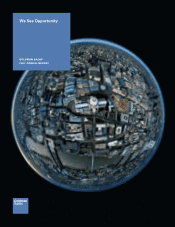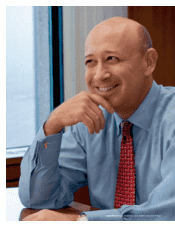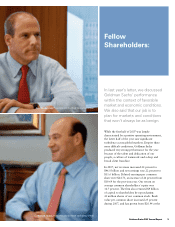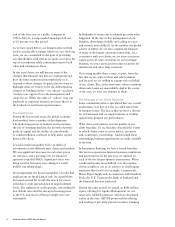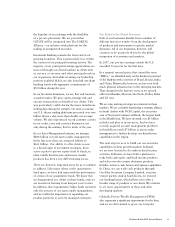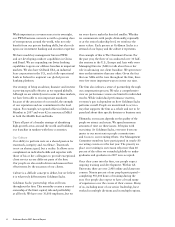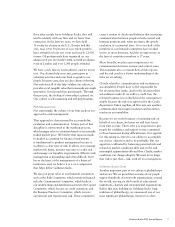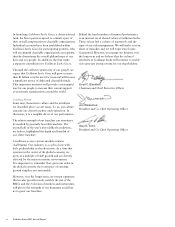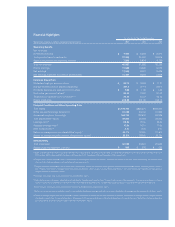Goldman Sachs 2007 Annual Report Download - page 9
Download and view the complete annual report
Please find page 9 of the 2007 Goldman Sachs annual report below. You can navigate through the pages in the report by either clicking on the pages listed below, or by using the keyword search tool below to find specific information within the annual report.Even after people leave Goldman Sachs, they still
tend to identify with our firm and we foster that
connection. In the last two years, we have held
15 events for alumni in the U.S., Europe and this
year, Asia. Over 50 percent of our retired partners
have attended at least one event and nearly 12,000
former GS professionals have registered on our
alumni web site. In October 2006, we held an alumni
event in London and over 1,000 people attended.
We have a rich history and tradition, and we invest
in it. Our alumni help us recruit, participate in
volunteer activities and come back to speak to our
people. In many cases, they are also clients of the firm.
Not only does all of this help validate our culture, it
provides a real, tangible value that transcends any single
generation. Good people hire good people. Through
this process, the feeling of ownership is passed on.
Our culture is self-sustaining and self-perpetuating.
Risk Management
Not surprisingly, the culture of our firm anchors our
approach to risk management.
That approach is characterized by accountability,
escalation and communication. A large part of this
discipline is represented in the marking process,
which assigns value to a position based on its currently
traded market price. We believe that rigorous mark-
to-market accounting for financial instruments
is fundamental to prudent management because it
facilitates a clear view of risk. It allows us to manage
market risk limits, monitor exposure to credit risk
and manage our liquidity requirements. Effective risk
management is demanding and often difficult, but it
lies at the heart of the management of a financial
institution, and, we believe it is a core competence
that helps define Goldman Sachs.
We also put great value in our firmwide committees
such as the Risk Committee, which monitors financial
risk; the Commitments Committee, which looks at
our underwriting and distribution activities; the Capital
Committee, which focuses on credit extension; and
the Business Practices Committee, which reviews
operational and reputational risk. These committees
create a system of checks and balances that encourage
communication between people in both control and
business positions and, when necessary, the speedy
escalation of a potential issue. Over one-half of the
members of our firmwide committees have worked
in two or more divisions. And the average tenure at
the firm of committee members is 17 years.
More broadly, we place great importance on
communication between revenue and control areas.
This translates into a constant flow of risk reports,
and the end result is a better understanding of the
risks we are taking.
Closely related to communication and escalation is
accountability. People have to feel responsible for
the decisions they make, and for the decisions their
subordinates make. If we suffer a credit loss, the
relevant business is not absolved of the consequences
simply because the risk was approved by the Credit
department. Taken together, all flow into one another:
communication encourages escalation and escalation
reinforces accountability.
Because we are in the business of assuming risk on
behalf of our clients, we know we will have losses
from time to time. That’s why it is important to give
people the confidence and support to stay committed
to those businesses during difficult times. Our appetite
for risk taking is central to our ability to accomplish
our clients’ objectives and to be profitable. But our
appetite is calibrated by balancing potential risk and
reward as market conditions shift and evolve and
meaningful opportunities ebb and flow. Clearly, market
conditions can change abruptly. We must never forget
that risk is just that
—
risk, with all its consequences.
Goldman Sachs Gives
Another important part of our culture is philanthropy
and service. We are proud that so many of our people
support hundreds of non-profit organizations around
the world, serving on the boards of educational
institutions, charities and environmental organizations.
Earlier this year, building on Goldman Sachs’ long
tradition of philanthropy, we announced one of our
most significant philanthropic initiatives to date.
7Goldman Sachs 2007 Annual Report

